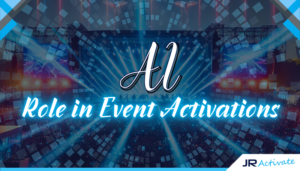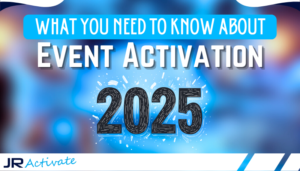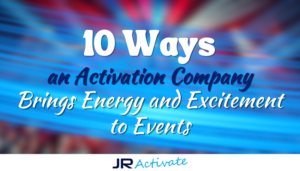In today’s market, having a strong activation plan is key for businesses in South Africa. It helps brands connect with their audience, increase brand awareness, and boost sales. This guide will show you how to make an activation plan that fits the South African market. We’ll cover strategies like experiential marketing, social media, influencer marketing, product sampling, and giveaways. In addition, we will explore the importance of incorporating digital activation strategies into your plan, such as online contests, mobile marketing, and email campaigns. These tactics are crucial in reaching the digitally-savvy consumers of South Africa and can greatly enhance the impact of your activation efforts. By implementing a well-rounded activation plan that incorporates both traditional and digital strategies, businesses can effectively engage their target audience and drive success in the South African market.
Whether you run a small business or work in marketing for a big company, knowing the South African market is vital. Working with local experts like JR Activate can make sure your brand connects with your audience and meets your marketing targets.
This guide will talk about setting clear goals, finding your audience, and picking the best activation strategies for your brand. We’ll look at making your activation engaging, measuring its success, and improving it for future campaigns.
Key Takeaways
- Understand the importance of an activation plan in the South African market
- Set clear goals and objectives aligned with your brand values
- Identify your target audience and tailor your activation strategies accordingly
- Choose the right mix of experiential marketing, social media campaigns, influencer collaborations, product sampling, and giveaways
- Create an engaging activation experience that incorporates interactive elements and leverages technology
- Measure the success of your activation plan using key performance indicators (KPIs)
Understanding the Importance of an Activation Plan
In today’s market, connecting your brand with your audience is key. An activation plan helps with this. It’s a strategy that makes consumers remember and interact with your brand. This leads to more awareness, loyalty, and sales. Knowing how to use an activation plan can boost your marketing and meet your goals.
Defining Activation Marketing
Activation marketing is more than just ads. It’s about making experiences that let people really connect with your brand. This can be through events, sampling, or social media. It aims to leave a strong impression on your audience. Understanding this approach helps you connect better with your customers.
Benefits of Having an Activation Plan
Having a good activation plan has many perks for your brand. It boosts engagement by offering meaningful interactions. These experiences build a bond and loyalty with your audience. It also makes customers more loyal by giving them special moments to remember.
Another plus is better visibility for your brand. Creative activations can create a buzz, reaching more people than you might have thought. This leads to more people knowing your brand, which is good for growth and success.
Companies like JR Activate in South Africa are experts at making plans that work. They help make sure your strategies fit your brand and appeal to your audience.
In short, knowing about activation plans is vital for brands wanting to stand out. By understanding what activation marketing is, seeing its benefits, and working with pros, you can make experiences that engage, keep customers coming back, and make your brand more visible. This puts you ahead of the competition.
Setting Clear Goals and Objectives
Creating an activation plan means setting clear goals and objectives. These guide your efforts and measure success. They should match your brand values and marketing strategy for a strong campaign.
Aligning Activation Plan with Brand Values
Your activation plan should mirror your brand’s core values and messages. Aligning your strategies with your brand identity makes your campaign authentic and memorable. Think about how you can share your brand’s unique selling points through your activation.
“Authenticity is key when it comes to activation marketing. Brands that stay true to their values and create genuine connections with their audience are more likely to see success.” – Sarah Johnson, Marketing Manager at JR Activate
Identifying Key Performance Indicators (KPIs)
To measure your activation plan’s success, pick key performance indicators (KPIs) that fit your goals. These KPIs should be SMART: specific, measurable, achievable, relevant, and time-bound. Common KPIs for activation campaigns include:
- Brand awareness
- Customer engagement
- Lead generation
- Sales growth
- Social media reach and engagement
Setting measurable objectives and tracking these KPIs gives you insights into your activation strategies. This helps you make data-driven decisions to improve your campaigns.
| KPI | Description | Measurement |
|---|---|---|
| Brand Awareness | The extent to which consumers recognise and recall your brand | Surveys, social media mentions, website traffic |
| Customer Engagement | The level of interaction and involvement customers have with your brand | Event attendance, social media engagement, customer feedback |
| Sales Growth | The increase in revenue generated as a result of your activation campaign | Sales data, conversion rates, average order value |
By setting clear goals and aligning your plan with your brand, and picking the right KPIs, you’re setting up for a successful campaign. This campaign will drive measurable results.
Identifying Your Target Audience
To make an effective activation plan, knowing your target audience is key. You need to understand what they like, need, and struggle with. This way, you can make your experiences hit home with them. It’s a great way to connect with your audience and boost your brand’s success.
Begin by making detailed customer personas using data like age, gender, income, and where they live. These details help you know who you’re talking to. For instance, JR Activate in South Africa uses customer personas to help brands get to know their audience better.
Then, look into psychographic data, which covers interests, attitudes, values, and actions. This tells you what drives your audience and what they’re into. Matching your activation plan with their values and interests makes your message hit the mark.
“Understanding your target audience is the key to creating successful activations. It’s not just about knowing who they are, but also what they care about and what drives their decisions.”
– Sarah Thompson, Head of Strategy at JR Activate
To learn more about your audience’s psychographics, try these:
- Analyse your current customers to spot common traits and actions
- Do surveys and focus groups to learn more about what they like and dislike
- Keep an eye on social media and forums to see what they’re talking about
By mixing demographic and psychographic data, you get a full picture of your audience. This helps you plan your activation with precision. Every choice, from where to hold it to what to do, should match what your audience likes.
| Demographic Data | Psychographic Data |
|---|---|
| Age | Interests |
| Gender | Values |
| Income | Attitudes |
| Location | Behaviours |
The more you know about your audience, the better you can craft experiences that stick with them. This leads to stronger connections and better results for your brand.
Choosing the Right Activation Strategies
Choosing the best activation strategies for your brand is key. You need to pick methods that grab your audience’s attention and meet your goals. A good mix of experiential marketing, influencer partnerships, social media, and product sampling works well. This approach boosts brand engagement and gets your audience involved.
Experiential Marketing
Experiential marketing creates memorable experiences for your audience. It uses all the senses to build strong emotional ties between your brand and customers. Working with experts like JR Activate can help you craft unique activations. These should reflect your brand’s unique personality and values.
Influencer Collaborations
Teaming up with influencers can help you reach more people and connect with new fans. Choose influencers who share your brand’s values. Look at their engagement, audience, and fit with your brand for the best results.

Social Media Campaigns
Social media is vital for reaching your audience today. Create fun and engaging content that gets people talking. Use hashtags, challenges, and user-generated content to interact with your followers. Platforms like Instagram, Facebook, and Twitter can help you spread the word and build a community around your brand.
Product Sampling and Giveaways
Product samples and giveaways create excitement and encourage people to try your products. Letting your audience try your products can make them more likely to buy them later. Use these in your marketing events or work with influencers to share samples with their followers.
“Product sampling is a tried-and-true activation strategy that can yield impressive results. By allowing consumers to experience your products firsthand, you’re not only generating awareness but also fostering a sense of connection and loyalty.” – Sarah Thompson, Brand Activation Expert
When picking activation strategies, think about your budget, timeline, and goals. Mixing experiential marketing, influencer partnerships, social media, and product sampling makes a strong plan. This plan will engage your audience and make a lasting impact.
Creating an Engaging Activation Experience
To make an activation experience truly engaging, focus on making immersive environments that grab your audience’s attention. Use interactive installations, sensory elements, and new technology to make your event unforgettable. This way, you strengthen the bond between your brand and your audience.
Designing Interactive Installations
Interactive installations get people involved and make brand interactions memorable. Think about how they fit with your brand’s message and values. For example, JR Activate in South Africa has made installations that let people try out products in new ways, like virtual try-ons or making their own products.
Incorporating Sensory Elements
Using many senses makes an experience more memorable. Add visuals, sounds, smells, and textures that match your brand. For instance, if you’re promoting a new perfume, create a scented path leading to a spot where people can try the fragrance and learn about it.
Leveraging Technology
Technology changes the game in making activation experiences engaging. Use virtual reality, augmented reality, or interactive displays to engage people in new ways. For example, augmented reality lets people see how a product would look in their space, making the interaction more personal.
“The key to a successful activation is creating a multi-sensory experience that immerses the audience in your brand’s world. By combining interactive elements, sensory engagement, and innovative technology, you can craft an unforgettable experience that leaves a lasting impact on your target audience.” – Sarah Thompson, Activation Manager at JR Activate
By using interactive installations, sensory elements, and technology, you can make your brand stand out. Aim to create a multi-sensory experience that pulls people into your brand’s story. This way, you leave a positive mark on your audience.
How to Do an Activation Plan?
Creating a successful activation plan needs careful planning and execution. It’s vital to follow a structured approach for your campaign’s success. This includes making a detailed timeline, using resources and budget wisely, and defining roles and responsibilities. This way, your activation plan is set up for success.
Crafting a Detailed Timeline
Creating a detailed timeline is key in developing an activation plan. It should list all tasks, milestones, and deadlines for your campaign. Start by dividing your plan into phases like pre-event planning, event execution, and post-event follow-up.
Identify actions for each phase and set realistic deadlines. Think about venue availability, supplier lead times, and marketing campaign durations when setting your timeline. A clear timeline helps ensure your plan moves smoothly and quickly spots and fixes any delays or issues.
Allocating Resources and Budget
Effective resource allocation and budget planning are crucial for your activation plan’s success. First, list all resources needed, like staff, equipment, materials, and marketing materials. Consider working with agencies like JR Activate for their expertise and resources.
When planning your budget, include all costs like venue rental, staff wages, production expenses, and marketing. Be realistic with your budget and focus on spending on key elements that impact your campaign’s success. Review and adjust your budget and resource allocation as needed to make the most of your investment.

Assigning Roles and Responsibilities
Assigning clear roles and responsibilities is vital for your activation plan’s success. Each team member should know their tasks and objectives. Consider their skills and expertise when assigning roles, ensuring everyone knows their part in the plan.
Establish clear communication and reporting to help your team work together effectively. Regular meetings and updates keep everyone on track and motivated. A well-structured team with clear roles and responsibilities leads to a successful activation plan.
In summary, a successful activation plan requires a strategic approach. This includes making a detailed timeline, managing resources and budget well, and assigning clear roles. With the help of agencies like JR Activate, you can create a strong plan that engages your audience and meets your brand goals. Careful planning and execution can make your campaign memorable and drive growth for your brand.
Measuring the Success of Your Activation Plan
After your activation plan is done, it’s key to see how well it worked and what you got back. Look at the key performance indicators (KPIs) you set before and check the data during and after the event. By looking at things like how many people came, how engaged they were, how many leads you got, sales, and what customers said, you can see how your activation did its job. This helps you see what worked and what you can do better next time.
To figure out your return on investment and show the value of your activation to others, use data analysis tools and methods. Sites like Hamilton Experience give great tips on how to measure brand activation success. They help you make choices based on data for your future campaigns.
It’s also important to ask customers what they thought after the event. This gives you insights on how well your activation worked and helps you improve for the future. By listening to what customers say, you can see what you did well and where you can get better.
| Key Performance Indicator (KPI) | Measurement Method |
|---|---|
| Brand Awareness | Surveys, social media mentions, website traffic |
| Engagement | Interactions per brand representative, social media engagements |
| Lead Generation | Number of new leads captured, conversion ratio |
| Sales | Product sales, revenue, profit |
| Brand Sentiment | Social media sentiment analysis, customer feedback |
Working with agencies like JR Activate can also help you measure better. As Radius Insights points out, these agencies can pick the right KPIs and help you track and understand your activation’s success.
Using data to measure your activation’s success lets you keep improving and getting better results each time. As Peter A. Mayer Advertising says, having a good plan for measuring success is key. It makes sure your brand activation works well and lifts your brand over time.
Conclusion
Creating a solid activation plan is key for businesses in South Africa. It helps them make a mark with their marketing efforts. By knowing what you want to achieve, who you want to reach, and the best ways to do it, you can make your brand unforgettable.
To make your plan work, focus on creating fun and engaging experiences. Use technology and sensory elements to make it stand out. It’s also vital to check how well your plan is doing to keep improving it. Working with experts like JR Activate can help you craft plans that really speak to your audience and bring results.
A good activation plan boosts customer interaction and builds loyalty. By offering unique experiences, you can stand out in South Africa’s busy market. Put effort into your activation plan, and you’ll see your brand grow in the eyes of your customers.






